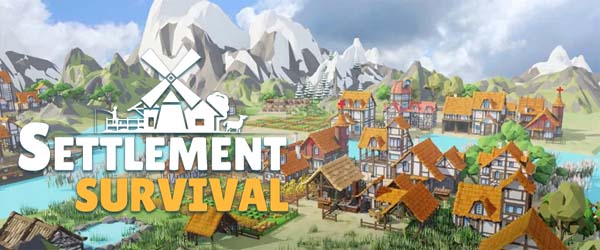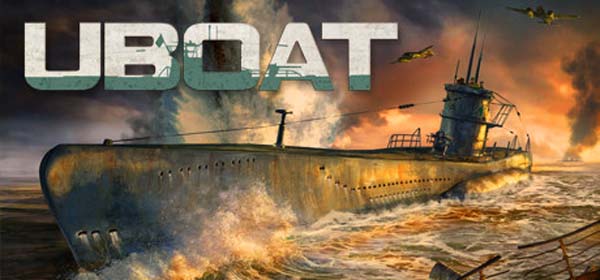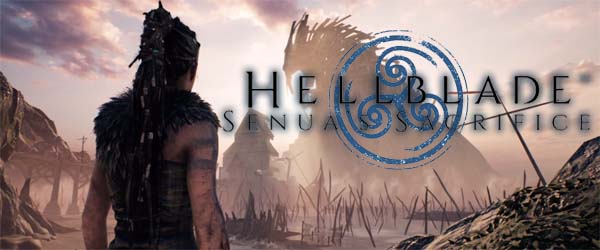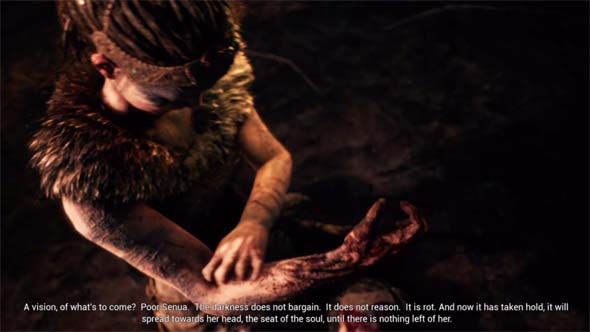
As my frequent readers probably know, I am a sucker for city-building and village-building games. I buy a few new ones almost every year, and ever since the release of Banished, the medieval village sim has been all the rage. Though it looks like post-apocalyptic settlement builders are also becoming a hot sub-genre -- probably as a result of the popularity of the settlement-building in Fallout 4. Anyway, last year, Chichian encouraged me to try out a then-Early Access title called Settlement Survival. I was hooked on it for a couple months, and then set it aside with the intent to come back to it later. In the meantime, the game saw its official Steam retail release, which encouraged me to go back and give it a second go (and formal review).
Time to plan
Settlement Survival is one of the more addictive and challenging city-builders that I've played. It features a complicated web of production chains and resources, which can be a real challenge to plan and manage. Trying to unlock and use everything in a single village will take a lot of time, effort, and planning.
Settlement Survival provides a handy-dandy timeline in the top right corner of the screen which shows when all the seasons start and end, and which also shows icons for important upcoming events. Everything from the arrival of a merchant ship, to incoming immigrants, and even disasters or other random events will be forecast a whole year in advance. This gives the player plenty of time to plan ahead, and avoids the problem of the player feeling un-prepared to take advantage of an un-expected boon or to mitigate a disaster.
This timeline is the core gimmick of the game, as it enables long-term planning.
There are also random events that are not forecast on the timeline, and they often require that the player have certain resources or tools on-hand. But these are rarely destructive, so worst case is that you miss out on the opportunity to get some free bonus resources (which you may or may not have needed anyway). Nevertheless, it does put a pressure on the player to build up a surplus stockpile of many goods in case one of these events pops up. Tools and beer being the most common items used for such events, based on my experience.
This timeline helps to create some medium and long-term planning and reward structures that really makes the game crazy addictive. There's the short-term goals for things like building the next building. Then there's the medium-term goals like completing the next harvest season. And then there's the longer-term goals like accumulating goods to trade to an incoming merchant ship, or waiting for the next batch of immigrants to give you a labor surplus that can allow you to go on the next wave of building infrastructure. There's always some milestone right over the horizon, and then another right beyond that, and I find myself playing longer than I had planned, and long after I should have gone to bed, because I want to get to that next harvest, or trade opportunity, or make sure that I get through that next disaster.
This also means that random disasters don't feel as annoying because you have plenty of warning that a disaster is coming, and can prepare accordingly. Further, the disasters themselves rarely kill population directly. Rather, they usually impact your resource-generation for a period of time. So most disasters are mitigated simply by stockpiling the affected resource ahead of time.
There are also random events that do not appear on the timeline.
The timeline also discourages save-scumming. Disasters are forecast a whole in-game year ahead of time, so re-loading to before the disaster would require going back more than a whole year. And that might not even necessarily save you, since I've noticed that the disasters still happen at the same time, even if I go back to a save from before the disaster shows up in the timeline. I'm not sure how long in advance they are generated, but the fact that I know that I can't avoid it by simply reloading and re-rolling a die means that I'm more inclined to batten down the hatches and just roll with whatever happens.
The end result is that the gameplay ends up feeling more organic, and the challenge of surviving and growing your fledgling settlement remains relatively high. When I do save-scum, it's usually to undo some mistake that I made, so that I learn from my mistake, fix it and do better; rather than to outright cheat by undoing some random event that the game threw at me.
[More]

I haven't been able to organize as many board game sessions as I would have liked to over the past 2 years, thanks to the ongoing COVID pandemic. By the time vaccinations were widely available, and we were willing to have more frequent gatherings, many of my board-gaming friends had returned to work. Many work irregular hours, so it's hard to organize games. And despite limiting gatherings, we still suffered our own COVID infections, and several other potential exposures that forced us or our friends into self-quarantine for a week or two, resulting in the cancellation of some board game plans. And of course, having an infant to take care of doesn't make organizing play dates any easier.
Despite not being able to play board games as much, I've still been buying board games, in the hopes that eventually we'll be able to overcome the need for social distancing and will be able to have larger game sessions again. One such game that I bought last summer is U-Boot: the Board Game, which is an app-assisted World War II submarine management game. The rulebook and "tactical guides" are massive, and the game looks lengthy with a steep learning curve. It's not the kind of game that we can play in an impromptu session. It requires preparation, and a lot of time to practice.
As such, I haven't been able to play it yet. I only downloaded the app and played around for a bit to try to learn the rules. Hopefully I'll get to play an actual game soon.
In the meantime, I decided I could maybe get my U-boat fix by buying and playing a totally different U-Boat: the Game, which is an early-access PC game on Steam. It has no relation to the board game, but feels like it could be.
U-Boat is still in early access when I played it. I'm not sure when it's supposed to come out of early access, but it seems like it's fairly complete and should be ready soon. I don't usually go for early access games. As any reader of this blog will know, I take a [possibly overly] critical view of the games I play, and playing an "incomplete" game can be a frustrating experience. I don't want the frustration of incomplete mechanics and frequent bugs to sour my opinion of a game to the point that I'm not willing to play it at all when it is eventually complete. For instance, I never went back to games like No Man's Sky after playing it on release. It wasn't early access, but it might as well have been considering how shallow and incomplete it felt. No matter how much my friends insist that it's better now, I just don't have the motivation to play it again.
I bought the U-Boot board game, and started reviewing the rules, but haven't been able to play it.
But I was itching for some U-boat action, and the user scores looked good, so I gave this one a try. This game is so "indie", I couldn't even find a website for the development studio; just some social media accounts on Facebook and Twitter.
Early access tutorial
One area that I hope gets a lot of attention before this game leaves early access is the tutorial. Despite taking hours to complete, the tutorial still left me feeling woefully unprepared for the game proper. U-Boat's tutorial teaches the basic mechanics of the game well enough. It taught me how to navigate my sub, how to submerge, how to assign orders to crew, and how to shoot enemy ships and planes using the automated mechanics. What it doesn't teach is any of the actual strategy or technique for operating a World War II submarine, nor does it teach any of the advanced, manual mechanics (like manual torpedo targeting).
How do I deal with escorted convoys? How do I approach without being detected, while still being able to get close enough to identify the ships and attack? Once I launch my torpedoes, what do I do next? Do I wait at periscope depth to confirm the kill? Do I immediately submerge and run away? How do I escape pursuing destroyers? How do I evade depth charges? If I'm hit by a depth charge, what do I do? None of this is explained by the tutorial. I had to spend several Saturday afternoons trying to figure all this out through trial-and-error by save-scumming a single random encounter. It was incredibly frustrating, and I barely had the patience to keep playing.
Tutorial teaches basic mechanics, but isn't effective at teaching strategy.
The early missions don't help ease the player into the game either. I did like 10 patrol missions in "The Black Pit" (the first and "easiest" campaign area), and only encountered a single convoy in the patrol areas, and was only able to sink 1 ship. I would zig-zag around the patrol area, but would never find any enemy contacts. On the way to or from the patrol area, I would often get radio requests to sink a transport with rare tech on board. These would often be escorted by multiple destroyers and a crap-ton of smaller corvettes, and as soon as I would sink one ship, those 3 or 4 destroyers would converge on my exact position and sink me with depth charges. [More]

Stranded Deep released on consoles last year after having spend half a decade in early access on Steam. I downloaded it for my PS4 when it was offered as the free monthly game, and had a lot of trouble getting into it. I was very frustrated with how little the game bothers to explain itself, and how much trial-end-error I had to put up with just to learn the basics. However, I did stick with it, and started to warm up to it after several restarts and some time spent on the wiki.
I imagine I'm not the only one checking out this game on consoles, especially since it was free for PSPlus users earlier this summer, so I thought I'd share 7 tips that I wish I'd known when I had started out. Hopefully, I can spare other players a lot of the trial-and-error and frustration that I had to endure, so that you can get to enjoying the game a lot quicker and more fully. I also want to point out that I'm playing the game on a PS4, and I understand that the PC version of the game is a little bit different. The tips that I offer here should also be relevant to PC players, but they are geared towards console players. That being said, here are 7 tips for surviving Stranded Deep:
[More]

Ninja Theory is a developer that doesn't have very much work under their belt, but the work that they have done has type-cast them into a very specific niche of games. They got their start with the PS3-exclusive Heavenly Sword, and then went on to develop the rebooted DMC (Devil May Cry). So they specialize in stylish, fast-paced, thumb-blistering action games. Hellblade: Senua's Sacrifice is a bit different though. It still has plenty of hacking and slashing, but it's a much slower, more cerebral experience, and it's Ninja Theory's first game that seems to really be about something.
Death, love, and psychosis
One of the principle gimmicks of the game is its perma-death feature. Early in the game, Senua is afflicted by a black rot on her arm. Each time she dies, the rot grows, and if it reaches her head, then she is lost to the abyss. At that point, the game is over, and your save file is deleted. It's similar to the concept of hollowing in Dark Souls, except this time, the game is very upfront and explicit in informing you that it can put a premature end to your adventure.

Out damned rot! Out, I say!
Each time you die, the rot grows. If it reaches your brain, it's game over, and your save file is deleted.
This upfront threat puts significant ludic pressure on the player to take Senua's life seriously and to play cautiously and defensively. Not only do you lose some small amount of progress when you die; you may lose all your progress if you are repeatedly sloppy. Ninja Theory isn't completely cruel though. As I progressed through the game, it became apparent that this mechanic is surprisingly forgiving. And if you want to know just how forgiving I think it is, then you can check out the super-duper-secret spoiler section at the bottom of this review. Early in the game, I started to suspect that the rot does not seem to progress if you die repeatedly to the same enemy or trap, so repeat deaths at the hands of a single particularly challenging encounter will not unfairly end your game. In fact, dying in boss encounters didn't seem to progress the rot at all! The combat difficulty is also set to automatically adjust itself by default. So if the waves of enemies become overwhelming for the player, the game will automatically scale them back.

PS Plus members can save scum
using the PS Cloud.
Also, if you happen to be playing on the PS4 (and are a PS Plus member), you can still save scum by using the PS Cloud feature. I would assume that you could also make a copy of your save file for the PC version. So you can use that for insurance if you want. Don't let the threat of perma-death stop you from playing this game.
The voices told me to
The second, and arguably more important, major gimmick of Hellblade is that the player character is a mentally and emotionally traumatized person who is suffering from severe psychosis. The most obvious manifestation is via voices in your head. The advice and information that these voices provide will even vary and will often conflict... [More]
b5fe948d-7b8b-4297-9a9f-28a743d532f9|2|5.0
Tags:Hellblade, Hellblade: Senua's Sacrifice, Senua, mythology, Norse mythology, Hell, Viking, Celtic, Pict, psychosis, hallucination, puzzle, rune, save scum, perma-death
|

| 12 | | | | | | | 60 | | 11 | | | | | | | 55 | | 10 | | | | | | | 50 | | 09 | | | | | | | 45 | | 08 | | | | | | | 40 | | 07 | | | | | | | 35 | | 06 | | | | | | | 30 | | 05 | | | | | | | 25 | | 04 | | | | | | | 20 | | 03 | | | | | | | 15 | | 02 | | | | | | | 10 | | 01 | | | | | | | 05 |
|